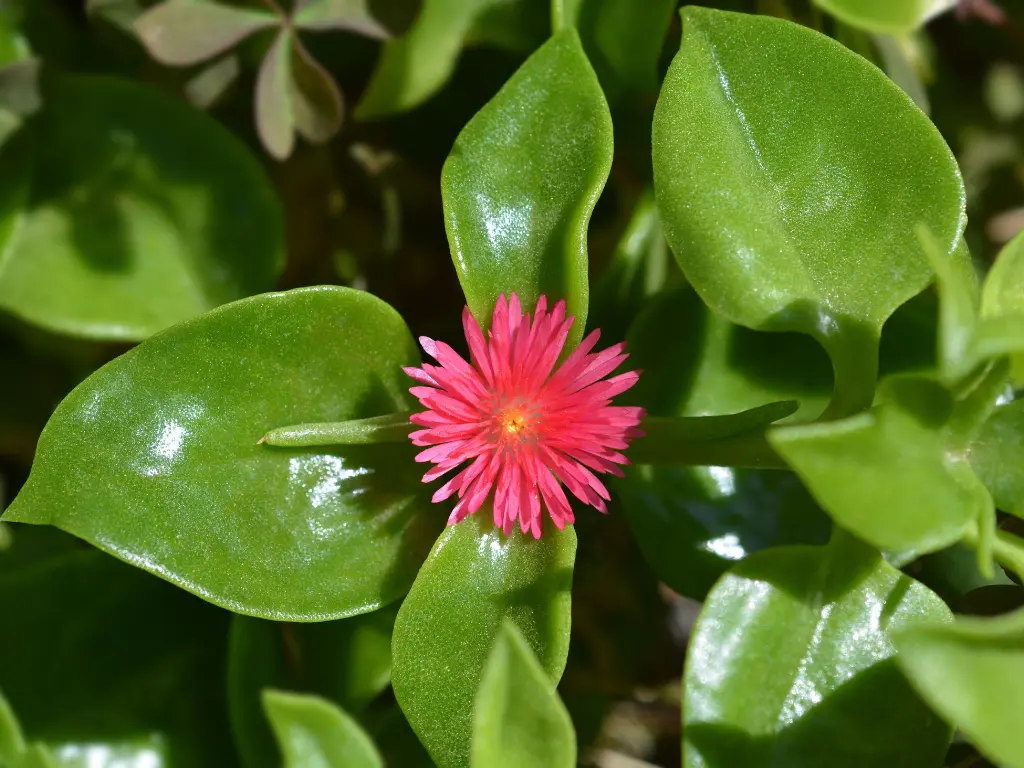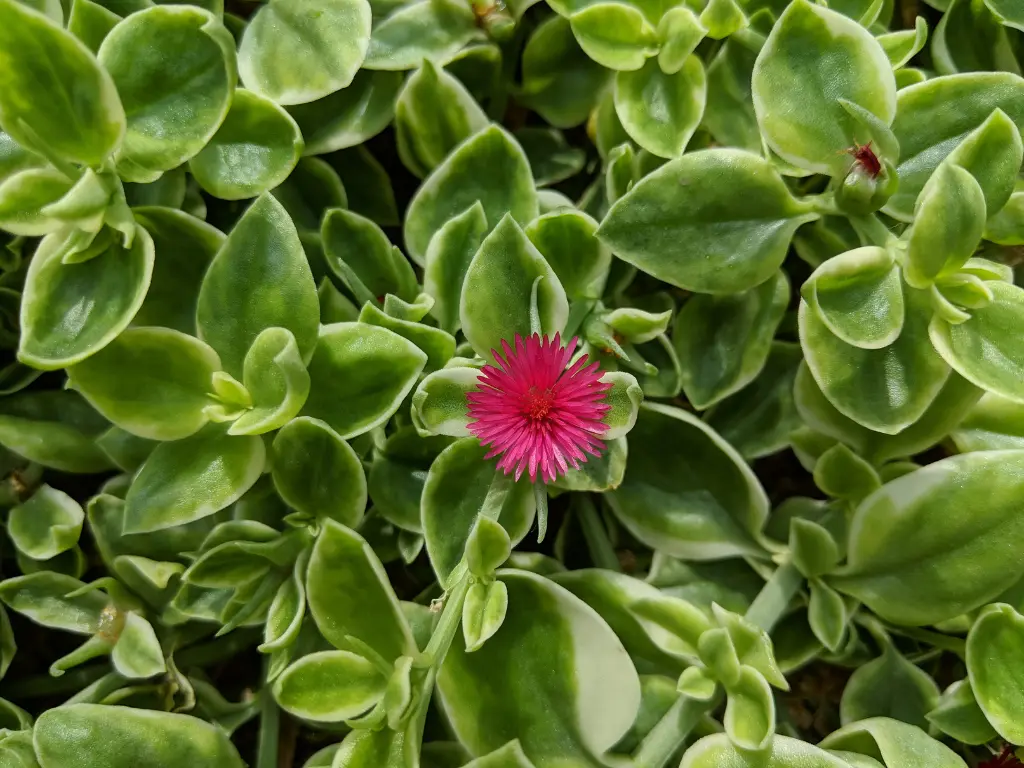If you’re a passionate gardener or someone looking to add a touch of beauty to your home with minimal effort, the Baby Sun Rose (Aptenia cordifolia) is a must-have plant. Its vibrant colors, hearty nature, and ease of care make it an ideal choice, whether you’re a beginner or a seasoned gardener. But how do you make sure this little beauty thrives in your garden or home? Well, you’re in the right place.
This guide is here to walk you through everything you need to know about Baby Sun Rose care—from ideal growing conditions to troubleshooting common issues. Let’s dive in and explore how you can help your Baby Sun Rose flourish!
What Is a Baby Sun Rose?

Before we get into the details of care, let’s take a moment to understand what Baby Sun Rose is and why it’s such a popular plant.
The Baby Sun Rose (Aptenia cordifolia) is a succulent native to South Africa, and it’s known for its beautiful, heart-shaped green leaves and striking, daisy-like flowers that bloom in shades of pink or purple. These little flowers make it a perfect addition to any garden, balcony, or indoor space. Whether you’re looking to fill a container garden or add some color to your ground cover, the Baby Sun Rose has got you covered.
It’s also a fantastic plant for those living in sunny areas as it thrives in full sunlight. What makes it even better is that it’s relatively low-maintenance, making it ideal for gardeners of all levels.
Benefits of Growing Baby Sun Rose
There are so many reasons to grow a Baby Sun Rose in your garden or home:
Landscaping Uses
These plants are excellent for ground cover in sunny spots, offering a burst of color year-round. They’re also perfect for containers, hanging baskets, or even as a border plant. Their low-growing, spreading nature makes them an ideal choice for creating attractive, low-maintenance landscapes.
Low Maintenance Appeal
Baby Sun Roses are incredibly low-maintenance, making them a perfect plant for gardeners who don’t have a lot of time but still want to enjoy beautiful, vibrant blooms. With minimal watering, pruning, and feeding, this plant will thrive with very little effort on your part.
Ideal Growing Conditions for Baby Sun Rose

Like all plants, Baby Sun Rose has specific growing conditions that will help it thrive. Getting the environment right is the first step toward success. Here’s how to ensure your Baby Sun Rose gets what it needs:
Sunlight Requirements
Baby Sun Roses are sun-lovers through and through. They need at least 6 hours of direct sunlight every day to bloom and grow strong. Think of them like solar-powered plants—the more sun, the better!
If you’re growing them indoors, try to place them near a bright, south-facing window. This will give them all the light they crave. If you’re in a particularly sunny area, you can also grow them outdoors in your garden, on your balcony, or in a sunny spot in your yard. Just make sure it’s a place that gets plenty of sunlight throughout the day.
Temperature and Hardiness Zones
The Baby Sun Rose is best suited for warmer climates. It grows best in USDA Hardiness Zones 9-11, which means it thrives in regions where temperatures range from 20°F to 40°F (-6°C to 4°C). If you live in a cooler climate, don’t worry—you can easily grow this succulent indoors and bring it outside when the weather is warm enough.
It’s important to remember that while Baby Sun Roses can tolerate the heat, they don’t handle frost well. If temperatures in your area drop significantly in the winter, bring the plant inside to avoid cold stress.
Soil Preferences
Just like other succulents, Baby Sun Roses prefer well-draining soil. A cactus or succulent mix works best, but you can also add some perlite to improve drainage. The plant doesn’t like to sit in soggy soil, as it can lead to root rot. It’s crucial to make sure the soil is dry between waterings and that the pot has drainage holes to allow excess water to escape.
When planting your Baby Sun Rose, be sure to use a pot with drainage holes. This allows excess water to escape and keeps the soil from staying too damp, which can harm the plant’s roots. A quick-draining soil mixture is key to maintaining a healthy plant that won’t suffer from the dreaded root rot.
How to Water a Baby Sun Rose

Watering can be tricky, especially for succulents. Baby Sun Roses are no different. They thrive when watered properly but can easily suffer from root rot if overwatered.
Watering Frequency
One of the biggest mistakes new succulent owners make is watering too frequently. Baby Sun Roses are drought-tolerant and only need to be watered about once a week during the warmer months (spring and summer). In the winter, you can reduce watering to once every two weeks or even less, as the plant goes into a dormant phase and requires less water.
How do you know when it’s time to water? Stick your finger into the soil. If it feels dry about 2 inches deep, it’s time to water. If it feels moist, wait a few more days before checking again.
Signs of Overwatering or Underwatering
You’ll need to keep a close eye on your Baby Sun Rose to avoid overwatering or underwatering. Here are some signs to watch out for:
-
Overwatering: Yellowing leaves, mushy stems, or a plant that’s wilting despite wet soil could be a sign of overwatering. If you notice any of these symptoms, cut back on watering and allow the soil to dry out completely.
-
Underwatering: On the flip side, if your plant’s leaves start to shrivel up, dry out, or curl at the edges, it might need more water. Just remember never to let the soil stay too soggy—Baby Sun Roses are much more tolerant of underwatering than overwatering.
Fertilizing and Feeding
While Baby Sun Roses don’t require frequent fertilizing, a little food here and there can help them thrive, especially during the growing season.
Use a balanced, diluted liquid fertilizer to give your plant the nutrients it needs. It’s best to use a fertilizer designed specifically for succulents or cacti. A slow-release fertilizer can also work well, but be sure to follow the instructions carefully. Overfertilizing can do more harm than good.
Fertilize your Baby Sun Rose once a month during the growing season (spring and summer). Once the cooler months arrive, cut back on feeding, as the plant’s growth slows down during this time.
Pruning and Maintenance
Pruning isn’t a necessity for the Baby Sun Rose, but it can help encourage fuller growth and keep the plant looking tidy.
The best time to prune your Baby Sun Rose is early spring, just before its growing season begins. Trim off any dead or damaged leaves, as well as any long, leggy growth. Don’t worry too much about cutting back—this plant is resilient and will bounce back beautifully.
To promote a bushier, fuller appearance, you can pinch back the tips of the stems. This will encourage the plant to grow more branches, making it appear denser and more compact. It’s a simple step that can make a big difference in your plant’s look!
Common Problems and How to Fix Them
Even though Baby Sun Roses are hardy, they can still face some challenges. Here’s how to tackle common problems:
Yellow Leaves or Wilting: This is often a sign of overwatering. Ensure the soil is completely dry before watering again. If the yellowing persists, it could be due to poor drainage or too much direct sunlight—adjust accordingly.
Pests and Diseases: While Baby Sun Roses are generally pest-resistant, they may occasionally attract mealybugs or aphids. If you spot pests, try wiping the affected areas with a damp cloth or using an insecticidal soap. Always treat your plants early to prevent an infestation.
Root Rot Prevention: Root rot is one of the most common problems with succulents, usually caused by overwatering or poorly-draining soil. To avoid this, make sure your Baby Sun Rose has a well-draining pot and soil, and only water when the soil is dry.
Propagating
Propagation is easy and fun, and it’s a great way to share Baby Sun Roses with friends or expand your collection. The best time to propagate your Baby Sun Rose is in the spring or early summer, when the plant is in its active growth phase. You’ll have the best success during this time!
To propagate, simply cut a healthy stem (around 4 inches) and let it callus over for a few days in a dry, shaded area. After the cut end has dried, plant it in well-draining soil, water lightly, and watch it start rooting.
Frequently Asked Questions (FAQs)
1. Can Baby Sun Rose grow indoors?
Yes, Baby Sun Roses can thrive indoors if placed in a bright location with plenty of sunlight. A south-facing window is ideal, but make sure it gets at least 6 hours of direct sunlight each day.
2. How often should I water Baby Sun Rose?
Water your Baby Sun Rose about once a week during the growing season and once every two weeks during the winter. Always check the soil first to ensure it’s dry before watering.
3. What’s the best soil mix for Baby Sun Rose?
Baby Sun Roses prefer a well-draining, sandy or cactus-specific soil mix. You can also add perlite to improve drainage.
4. Is Baby Sun Rose safe for pets?
Baby Sun Roses are considered non-toxic to pets, but it’s always a good idea to discourage pets from nibbling on your plants.
Conclusion
Taking care of a Baby Sun Rose is simple, and with the right care, it will reward you with stunning flowers and lush foliage. Whether you’re adding it to your garden, patio, or indoor space, this resilient plant is sure to bring joy and beauty to your surroundings. So go ahead, give your Baby Sun Rose a cozy spot to thrive, and watch it flourish!
Happy gardening, and don’t forget—your Baby Sun Rose will thank you for the love and care you give it!
You may like:
